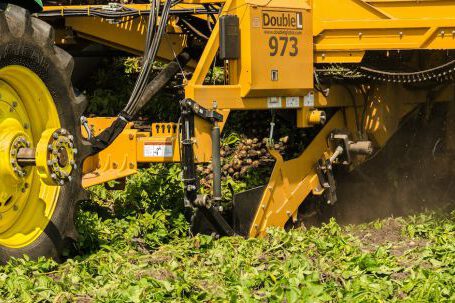The Anatomy of an Excavator: A Comprehensive Guide
Excavators are indispensable pieces of equipment used for a variety of construction, digging, and demolition tasks. These heavy-duty machines consist of many components that work together to enable efficient and effective excavation. Understanding the anatomy of an excavator can help you make educated decisions when purchasing, operating, and maintaining one.
The Cab
The cab is the enclosed area that the operator sits in and operates the excavator. It is usually equipped with a comfortable seat, adjustable armrests, a control panel, foot pedals, and a joystick. The control panel includes gauges and switches that the operator uses to monitor and control the excavator. The foot pedals control the tracks on the excavator, while the joystick is used to control the arm and bucket.
The Arm and Boom
The arm and boom are the main components of the excavator, and they are responsible for the actual excavation. The arm is a long, articulated metal arm that is connected to the boom. It is controlled by the joystick in the cab and is used to move the bucket and other attachments. The boom is a large metal structure that is attached to the base of the excavator. It provides the necessary stability and support for the arm and also houses the hydraulic cylinders that power the arm.
The Bucket
The bucket is the most visible part of the excavator and is used to dig and move material. It is attached to the end of the arm and is powered by the hydraulic cylinders located in the boom. The size and shape of the bucket will vary depending on the type of material being excavated. Buckets come in a variety of sizes and shapes, and they can be outfitted with additional attachments such as teeth, blades, and rippers.
The Tracks
The tracks are the large metal tracks that provide the excavator with mobility. They are powered by hydraulic cylinders and are controlled by the foot pedals in the cab. The tracks are designed to provide traction and stability to the excavator, and they can be equipped with rubber pads to reduce the amount of noise and vibration.
The Engine
The engine is the heart of the excavator and is responsible for providing power to the other components. The engine is typically diesel-powered and is located in the base of the excavator. The engine is connected to the hydraulic pumps, which provide power to the tracks, arm, and bucket.
The Hydraulic System
The hydraulic system is responsible for providing power to the various components of the excavator. The hydraulic system consists of a series of pumps, valves, and cylinders that generate and control the pressure of the hydraulic fluid. This hydraulic fluid is then used to power the arm, tracks, and bucket.
The Counterweight
The counterweight is a large metal weight that is attached to the rear of the excavator. Its purpose is to provide stability and balance to the excavator, and it is essential for effective excavation. The counterweight also helps to prevent the excavator from tipping over when digging in uneven terrain.
Conclusion
An excavator is a powerful and versatile machine that consists of many components that work together to enable efficient and effective excavation. Understanding the anatomy of an excavator is key to making educated decisions when purchasing, operating, and maintaining one. Knowing the purpose and function of each component will help you remain safe and get the most out of your excavator.






